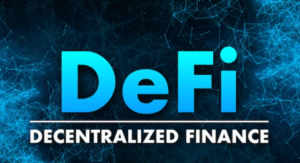$BTC #Bitcoin #CryptoNews #Investing #Finance #MacroTrends #ETFs #Blockchain #DigitalAssets #Web3 #DeFi #MarketAnalysis
How Will Macro Factors and Spot ETFs Shape Bitcoin’s Future Price Path? Discover the Strategy!
The narrative surrounding Bitcoin has undergone a significant transformation. Once deemed a niche, speculative asset, Bitcoin now occupies a pivotal role in global macroeconomics and mainstream finance. Recent macro news highlights a crucial shift in perceptions, as institutional interest and regulatory developments drive Bitcoin’s integration into traditional financial systems. This evolution raises important questions about how Bitcoin will be woven into the fabric of global finance.
As Bitcoin experiences volatile yet meaningful price movements, it becomes clear that the conversation has shifted from questioning its relevance to understanding its potential integration. This shift underscores the importance of macroeconomic factors and the emergence of spot exchange-traded funds (ETFs) in shaping Bitcoin’s future trajectory.
Understanding the Role of Macro Factors
Macro factors significantly influence Bitcoin’s price dynamics. Economic indicators such as inflation rates, interest rates, and geopolitical tensions directly impact investor sentiment. For instance, rising inflation often leads investors to seek alternative assets, propelling interest in Bitcoin as a hedge against currency depreciation. Similarly, central bank policies that favor low interest rates can drive capital into riskier assets, including cryptocurrencies.
Moreover, Bitcoin’s correlation with traditional markets has become more pronounced. As investors increasingly view Bitcoin as a digital gold, its price movements begin to reflect broader economic trends. This correlation suggests that Bitcoin’s future price path could be shaped not only by its own market dynamics but also by the prevailing macroeconomic climate.
The Impact of Spot ETFs on Bitcoin’s Adoption
Spot ETFs represent a game-changing development in the cryptocurrency landscape. By allowing investors to gain exposure to Bitcoin without directly purchasing the asset, these financial products can attract a broader audience. Increased participation from institutional investors could lead to greater liquidity and price stability, enhancing Bitcoin’s standing as a legitimate asset class.
Furthermore, the approval of spot ETFs could signal regulatory acceptance of cryptocurrencies, which may foster further institutional adoption. As traditional financial institutions embrace Bitcoin, the narrative surrounding the cryptocurrency will likely evolve. This transformation may contribute to a more stable price environment, allowing Bitcoin to flourish as a mainstream financial instrument.
Navigating the Future of Bitcoin
The intersection of macroeconomic factors and the rise of spot ETFs heralds a new era for Bitcoin. Investors should remain vigilant and informed about these developments while analyzing Bitcoin’s price strategies. Understanding the broader economic landscape can provide valuable insights into potential price movements and market trends.
For those looking to stay updated on the latest developments in the cryptocurrency space, consider exploring additional resources on crypto trends. Engaging with this evolving narrative can equip investors with the knowledge necessary to navigate the complexities of Bitcoin and its integration into the global financial system.
In conclusion, Bitcoin’s integration into mainstream finance is not just a matter of speculation; it is a reality shaped by macroeconomic factors and innovative financial products like spot ETFs. As the global financial landscape continues to evolve, understanding these elements will be crucial for anyone looking to invest in Bitcoin or follow its journey through the complexities of modern finance. For a deeper dive into trading opportunities, check out this referral link to explore potential trading strategies and platforms.











Comments are closed.